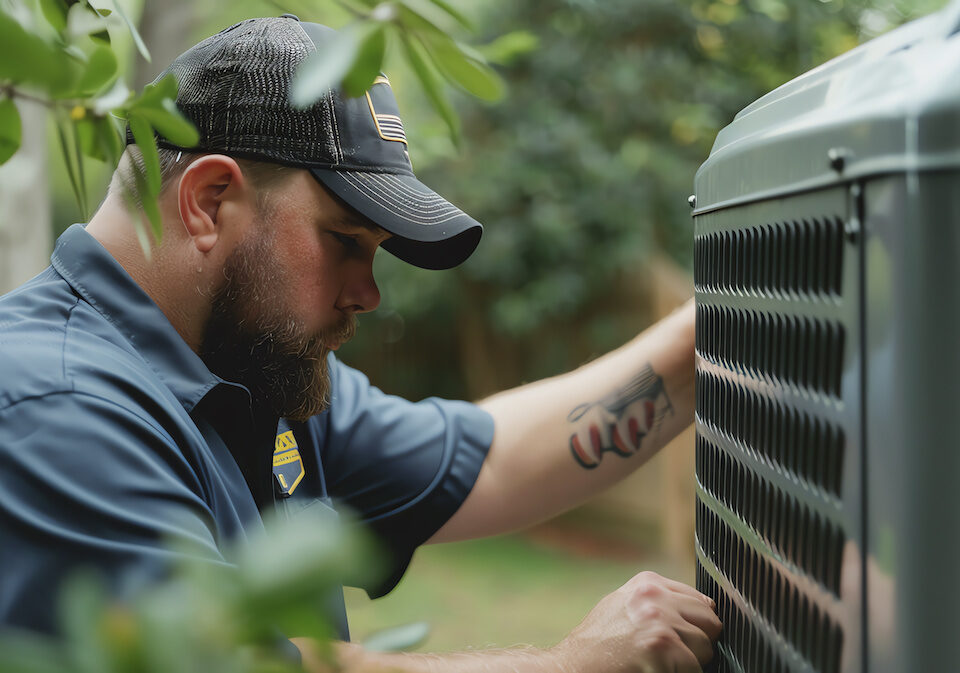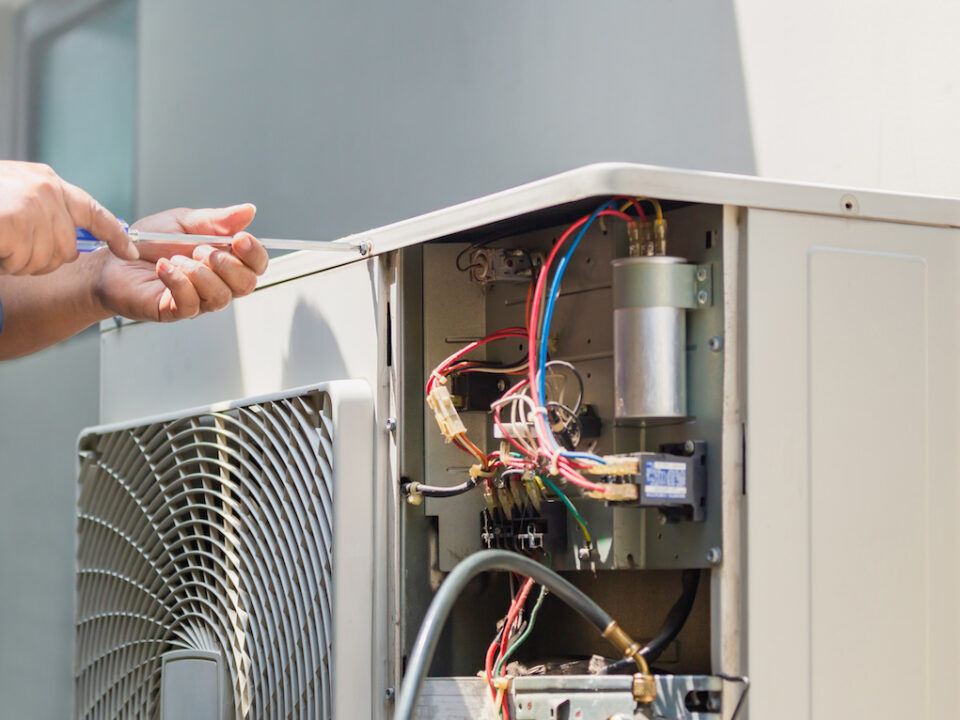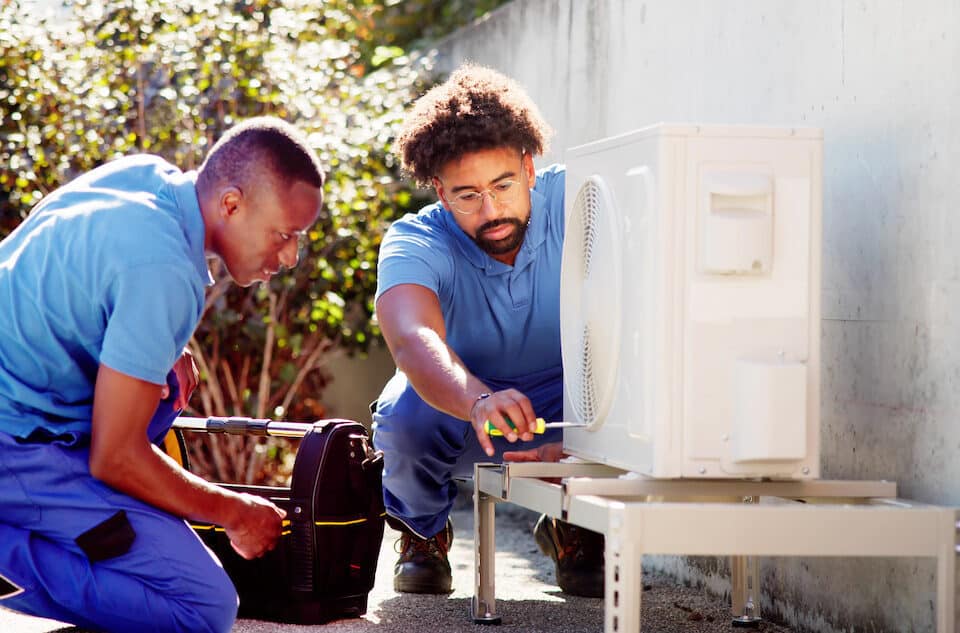The 4 Basic Categories of HVAC Systems
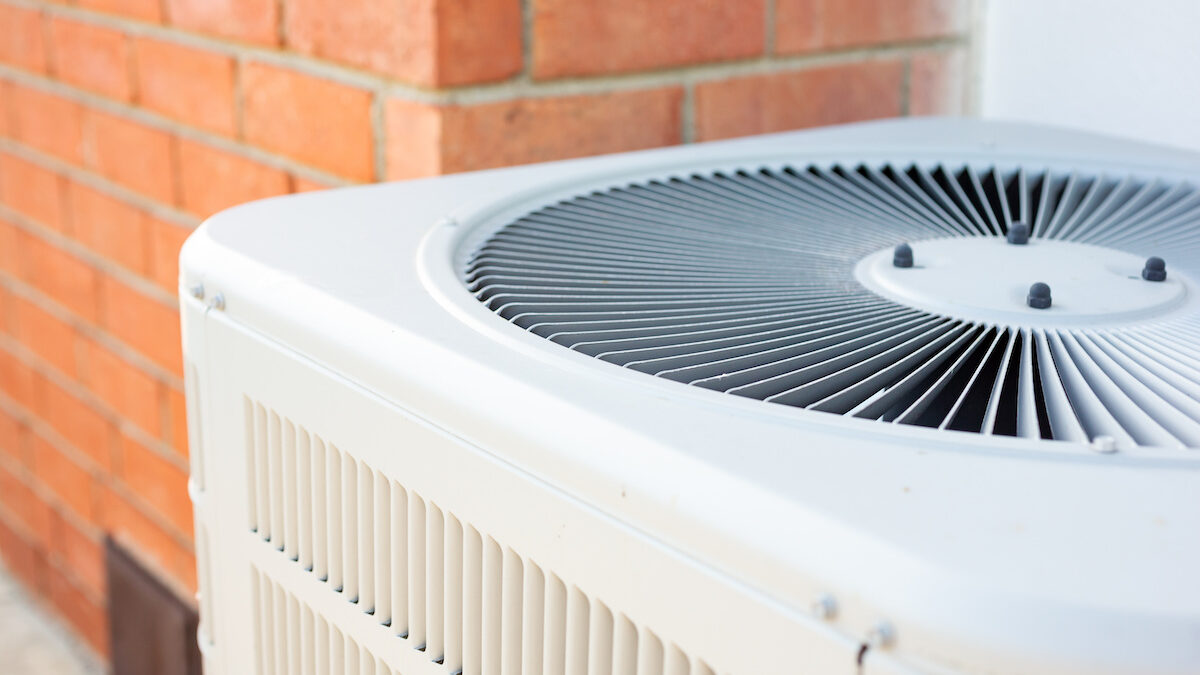
Heating, ventilation, and air conditioning (HVAC) systems are essential for maintaining comfortable indoor environments year-round. While there are various types of HVAC systems available, they generally fall into 4 basic categories of HVAC systems:
- Split systems
- Packaged systems
- Ductless mini-split systems
- Geothermal heat pump systems
Each category has its unique features, benefits, and applications. Let’s explore them in detail:
4 Basic Categories of HVAC Systems
1. Split Systems
Split systems are the most common type of HVAC system found in residential and commercial buildings. They consist of two main components: an indoor unit and an outdoor unit. The indoor unit typically contains the evaporator coil and blower, while the outdoor unit houses the compressor and condenser coil. Split systems are categorized into two subtypes:
Air Conditioners: These systems provide cooling only and are ideal for climates where heating is not a primary concern. Air conditioners use refrigerant to absorb heat from indoor air and transfer it outside.
Heat Pumps: Heat pumps provide both heating and cooling by reversing the refrigeration cycle. In the summer, they extract heat from indoor air and transfer it outside to cool the space. In the winter, they absorb heat from outdoor air (or from the ground in geothermal systems) and transfer it indoors to heat the space.
2. Packaged Systems
Packaged systems contain all components of the HVAC system in a single cabinet, which is typically located outdoors. These systems are commonly used in areas with limited indoor space, such as:
- Small homes
- Apartments
- Commercial buildings
These packaged systems are categorized into three main types:
Packaged Air Conditioners: Similar to split-system air conditioners, packaged air conditioners provide cooling only and include the compressor, condenser, and evaporator coil in one unit.
Packaged Heat Pumps: These systems offer both heating and cooling capabilities, making them versatile options for year-round comfort. They operate similarly to split-system heat pumps but are in a single outdoor unit.
Packaged Gas/Electric Systems: Also known as hybrid systems, these units combine a gas furnace for heating and an electric air conditioner for cooling in one cabinet. They are particularly suitable for regions with harsh winters where a gas furnace is necessary for efficient heating.
3. Ductless Mini-Split Systems
Ductless mini-split systems offer a flexible and energy-efficient alternative to traditional HVAC systems, especially in situations where ductwork installation is impractical or costly. These systems consist of an outdoor condenser unit and one or more indoor air-handling units, connected by refrigerant lines.
Key features of ductless mini-split systems include:
- Zoned Heating and Cooling: Each indoor unit is controlled independently, allowing for personalized comfort in different areas of the home or building.
- Easy Installation: Since no ductwork is required, installation is relatively simple and minimally invasive, making ductless mini-splits ideal for retrofitting older buildings or adding climate control to room additions.
- Energy Efficiency: Ductless systems avoid energy losses associated with ductwork, resulting in higher efficiency and lower utility bills. Additionally, some models feature inverter-driven compressors, which adjust speed to match the heating or cooling load, further enhancing energy savings.
4. Geothermal Heat Pump Systems
Geothermal heat pump systems utilize the constant temperature of the earth to provide heating, cooling, and hot water. These systems circulate a water-based solution through underground pipes, known as a ground loop, to exchange heat with the earth.
Geothermal heat pump systems have two main types:
Closed Loop Systems: In a closed-loop configuration, the ground loop is buried horizontally or vertically in the ground near the building. The fluid circulates through the loop and absorbs or releases heat. This depends on whether heating or cooling is required.
Open Loop Systems: Open-loop systems use groundwater as a heat source or sink. Water is pumped from a well, circulated through the heat pump. Then discharged into a separate well, stream, or pond.
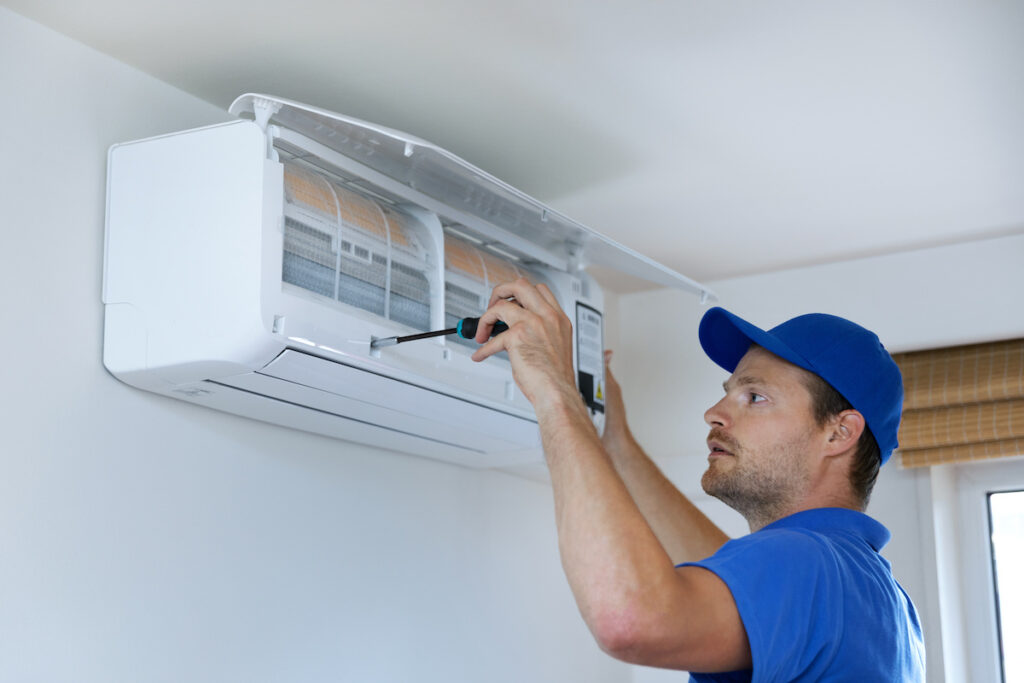
Call on a Pro to Select One of the 4 Basic Categories of HVAC Systems
An expert HVAC installer plays a crucial role in helping you select the right system for your home or building. Here’s how:
1. Assessment of Needs
HVAC professionals begin by assessing your specific heating and cooling needs based on factors such as:
- The size of your space
- Insulation levels
- Number of occupants
- Existing HVAC infrastructure
They’ll take into account your comfort preferences, budget constraints, and any unique requirements you may have.
2. System Recommendations
Based on their assessment, HVAC installers can recommend the most suitable HVAC system for your property. They’ll consider factors like energy efficiency ratings, system capacity, and compatibility with your existing ductwork or infrastructure. Traditional split system, ductless mini-split, and geothermal heat pump all provide options tailored to your needs.
3. Sizing Calculations
Proper sizing is crucial for HVAC system efficiency and performance. HVAC professionals use industry-standard calculations to determine the correct size of the heating and cooling equipment needed for your space. Oversized systems can lead to short cycling and energy waste, while undersized systems may struggle to maintain consistent comfort levels.
4. Installation Expertise
Once you’ve selected the right HVAC system, expert installers will ensure proper installation according to manufacturer specifications and local building codes. They’ll handle all aspects of the installation process to ensure optimal performance and safety, including:
- Equipment placement
- Ductwork configuration
- Electrical connections
- Refrigerant handling
5. Optimizing Efficiency
HVAC professionals understand the importance of energy efficiency and can recommend additional features or upgrades to optimize your system’s performance. This may include programmable thermostats, zoning controls, or air sealing and insulation improvements to minimize energy waste and reduce utility costs.
6. Testing and Balancing
After installation, HVAC installers conduct thorough testing and balancing to ensure that the system operates efficiently and evenly distributes heating and cooling throughout your space. They’ll check airflow, temperature differentials, and system pressures to verify proper operation and make any necessary adjustments.
7. Post-Installation Support
A reputable HVAC installer provides ongoing support and maintenance services to keep your system running smoothly. They’ll offer advice on system operation, maintenance tasks, and troubleshooting tips to address any issues that may arise. Regular maintenance visits can extend the lifespan of your HVAC system and maximize its efficiency.
Working with an expert HVAC installer ensures that you:
- Select the right system for your needs
- Receive a professional installation
- Benefit from ongoing support to keep your system operating at its best
Their expertise and guidance can help you make informed decisions and enjoy optimal comfort and energy savings for years to come.
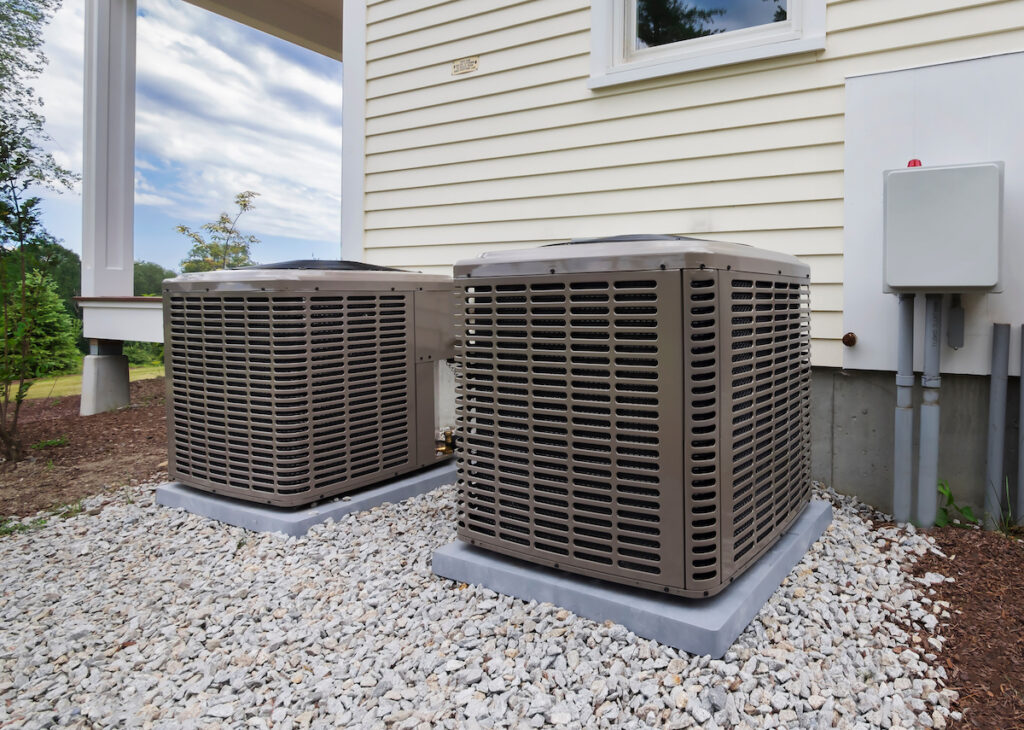
Need Help Deciphering the 4 Basic Categories of HVAC Systems?
Understanding the basic categories of HVAC systems is essential for homeowners and building managers. This will help them select the most suitable HVAC system for their needs. Whether it’s a traditional split system, a space-saving packaged unit, a ductless mini-split system, or an energy-efficient geothermal heat pump, each type of HVAC system has its advantages and applications.
By considering factors such as space constraints, energy efficiency goals, and climate conditions, you can make informed decisions. This will ensure optimal comfort and performance in your home or building.
If you need help selecting one of the 4 basic categories of HVAC systems, reach out to our team at Trust Heating and Air! We’ll help you select and install the right system for your needs!

